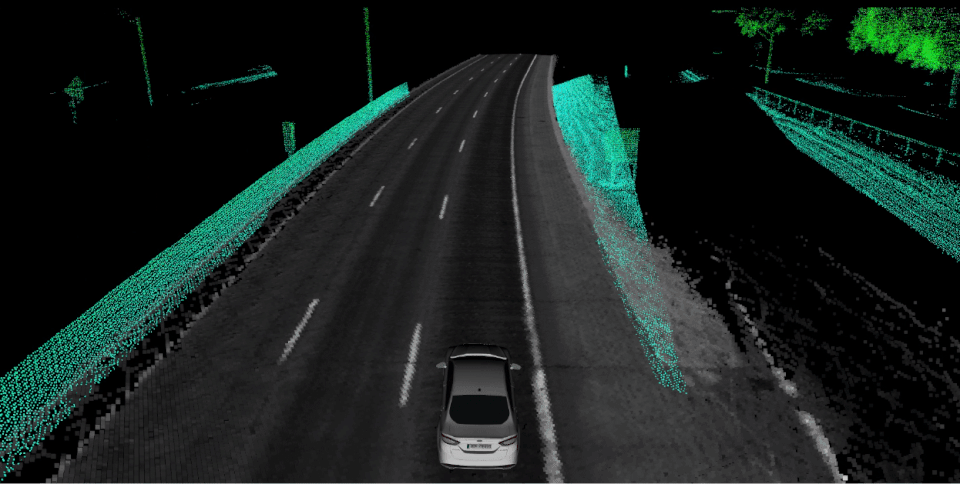Ford shares a year's worth of self-driving car data
It wants to help advance autonomous vehicle research and development.
Self-driving vehicles require massive amounts of data, which can be difficult to obtain without vehicles equipped with cameras and LiDAR and miles and miles of testing. To help advance autonomous vehicle research, Ford is releasing a comprehensive self-driving dataset to academics and researchers.
“There’s no better way of promoting research and development than ensuring the academic community has the data it needs to create effective self-driving vehicle algorithms,” the company wrote in a Medium post.
The data was collected over the span of one year, and it comes from multiple self-driving research vehicles. It includes LiDAR and camera sensor data, GPS and trajectory information, as well as 3D point cloud and ground reflectivity maps. Ford is even sharing a plug-in with data visualization tools.

While other companies, like Waymo, have shared self-driving vehicle data in the past, the breadth and depth of Ford’s data is unusual. Because it was collected over an entire year, it includes a variety of weather conditions, including rain, sun, clouds and snow. The data was gathered in the Metro Detroit area, so the vehicles experienced dense urban areas, freeways, tunnels, residential neighborhoods, airports, construction zones and pedestrian activity. That should give research access to the kinds of diverse scenarios self-driving vehicles will find themselves in, Ford says.
Plus, while most datasets only offer data from a single vehicle, this data comes from multiple vehicles. That means researchers can explore, for instance, what happens when two vehicles encounter each other. One might be able to detect things that the other cannot “see,” which could lead to development around multi-vehicle communication, perception and path planning.
The data is available through a collaboration with Amazon’s open data program, and more info can be found at avdata.ford.com. The first set of data is available now, and Ford says it will continue uploading the rest of the data logs.
Ford has tested its self-driving vehicles and delivery services in a handful of cities -- though it clarified that this data is separate from the work it’s doing with Argo AI to develop a production-ready system. Ford originally planned to launch its self-driving car fleet in 2021, but last week, the company pushed its goal into 2022.
“Given the challenges of the current business environment, as well as the need to evaluate the long-term impact of COVID-19 on customer behaviors, Ford made the decision to shift the launch of its self-driving services to 2022,” Ford said in a statement shared with Engadget.
CEO Jim Hackett had already scaled back Ford’s self-driving ambitions. Last spring, Hackett said the fleet’s "applications will be narrow, what we call geo-fenced, because the problem is so complex."
Update 5/5/2020 4:20PM ET: This story was updated to note that Ford now plans to release its self-driving vehicle fleet in 2022. The company announced the change along with its first quarter earnings.

 Yahoo Lifestyle
Yahoo Lifestyle 
